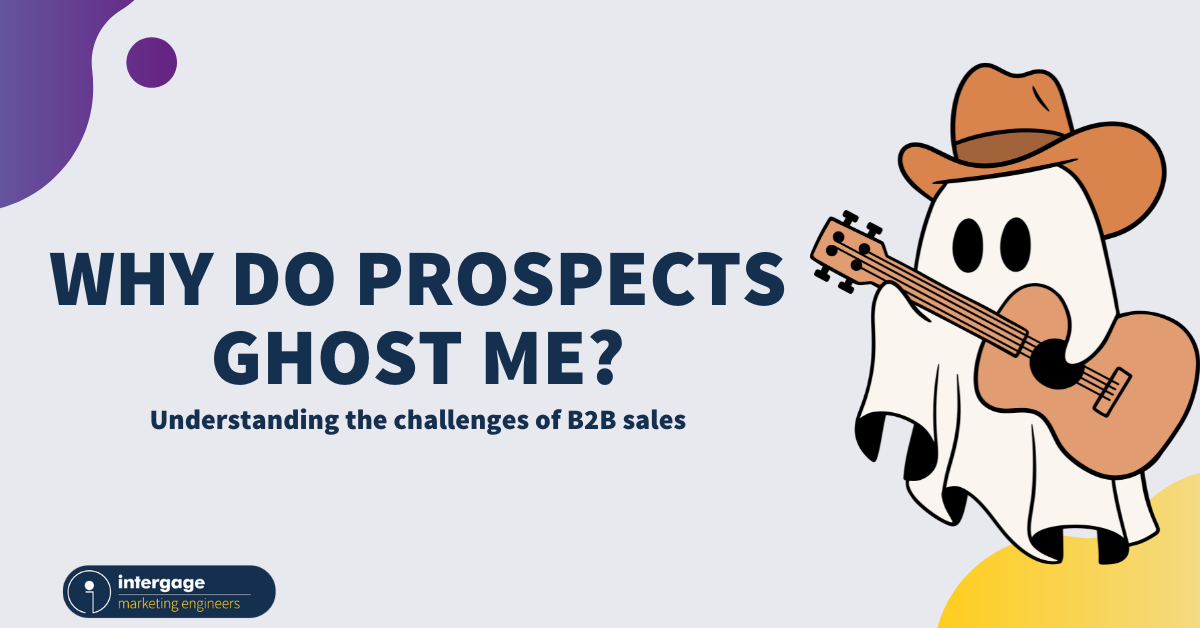Catch-22 of B2B Sales: How to Unlock Shorter Sales Cycles
We all know B2B sales cycles are painfully long. Unfortunately, it looks like they’re getting even longer.Almost half of B2B sales to new customers take seven months or more to close. Bear in mind that this doesn’t take into consideration those sales opportunities that stall or disappear because buying committees simply can’t reach consensus. We discuss other stats that demonstrate why you can’t close deals elsewhere on the blog.
So, why are B2B sales cycles so long and what prevents you being able to shorten them?
Why are my sales cycles so long?
There are a number of reasons why your sales cycles seem to go on forever and no, it’s not because your salespeople aren’t doing their job properly.
Complex solutions
In the B2B world, solutions are often complex, impacting a number of departments which means multiple people need to be involved in the decision (we’ll talk about that next). To come to an agreement on one of these solutions requires research, investigations, demos and lengthily discussions. Your prospects likely already have a solution in place so they’ll also need to evaluate the effects change financially and practically.
Large buying teams
Unfortunately, selling is no longer as easy as getting one person to sign on the dotted line. We’ve mentioned in a number of our blogs that the average buying group contains four or more people. Each of these people has different challenges, attitudes and goals and in order for your sale to progress, they need to reach consensus. This can be a painful process and is often what ultimately stalls or completely stops a sale.
Fear of messing up
On top of this, your buyers have a huge fear of messing up. B2B purchases often involve a lot of time and money. You buyers will often feel threatened at the prospect of making the wrong decision, costing the business unnecessary money or a new products or solution backfiring. This again leads to stalled sales and longer sales cycles. Sometimes, prospects can completely ghost you all together.
Not having the right content
Your buyers want to self-educate. In fact, 67% of buyers prefer not to interact with a sales representative as their primary source of information. If you do not have content ready to go to help your buyers through this complex journey, you’re slowing your own sales down!
Market conditions
We’ve all been through a lot in the last 5-10 years and naturally, buying habits have become more conservative. Sellers now need to do much more to convince buyers to make a purchase!
Multiple buying jobs
B2B buyers have a number of jobs to complete in order to make a purchase decision. It’s not as simple as signing on the dotted line. We’ve identified at least six jobs including: problem identification, solution exploration, requirements building, supplier selection, validation and consensus creation. These jobs often happen in tandem and are revisited at least once each!
The challenge of slow sales cycles
The impact of these issues is two-fold. They slow down the buying and decision-making process for your prospects. But they also cause major issues for you as the solution provider or seller.
Slow sales cycles make it really difficult for you to forecast revenue. So much depends on when your prospect will make a decision and if they will make a decision at all. The best thing you can do in the meantime is ensure your prospects have all the content they need to make an informed decision – that’s something we’ll discuss shortly.
On top of this, slow sales cycles can cause strains on cash flow and resources while also increasing your average cost per sale – not a situation any B2B business wants to be in.
Now, onto the information you've been waiting for...
How can I shorten my sales cycles?
Each of the challenges discussed in this article has, in some way or another, been related to your buyers' ability to make a decision and a purchase. As the seller, you probably feel like the only thing you can do is keep chasing, asking if they have made a decision while watching your sales pipeline slowly disappear into the month end.
The most successful B2B business are those that centre their strategies on buyer enablement. You can find out more about buyer enablement elsewhere, but essentially it involves closing the gap between you and your prospects by better understanding their buying journey and creating content that the entire buying committee can consume in their own time.
This content needs to cover every stage of the process and help them through each of their buying jobs. You also need to ensure you’re creating content for each member of the buying committee, including the blocker!
The best buyer enablement content is:
- Interactive
- Shareable
- Useful
Ultimately, your content library needs to help your buyers with each of the challenges we discussed previously. It should help them reach consensus, discuss their objections and concerns openly and provide guidance on what your solution could really look like for them!
The success of your content really does rely on you having a deep understanding of your audience though. You need to know who is involved in the buying process and why they do and don’t make decisions to inform which content you create.
Having invested in this ourselves, we know how powerful the results can be. Since implementing a buyer enablement strategy, we’ve seen results including:
- 76% uplift in total revenue
- 101% increase in average order value
- 400% increase in the number of contracts sold.




